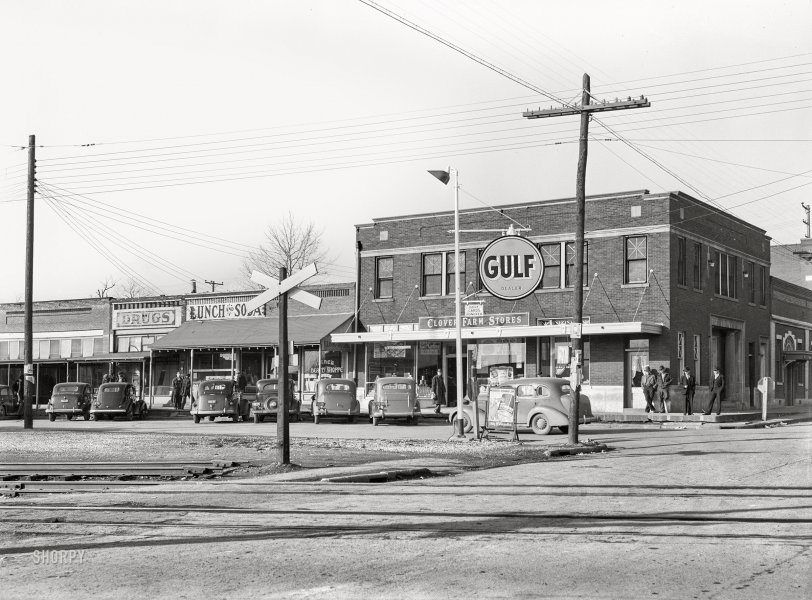


Framed or unframed, desk size to sofa size, printed by us in Arizona and Alabama since 2007. Explore now.
Shorpy is funded by you. Patreon contributors get an ad-free experience.
Learn more.

- Lofty addition
- In 1912
- Keenan Building
- Six years old
- Taken from the P.J. McArdle Roadway?
- It stood only 47 years
- Three track mind
- Incline to the right
- Reach for the sky, 1912 style
- No clean sweep
- Same Job Title, Same Face
- Sadly Lost
- Beautiful ...
- Where you get your kicks
- Aim High
- Pueblo Revival sisters
- Pueblo Neoclassicism
- Milk Man
- Regional dialect.
- Spielberg's inspiration
- Great Photo
- Loaf Story
- Do you still have the Rakes category?
- Could almost be a scene from the 1957 movie 'Hell Drivers'
- The Wages of Fear.
- Conspicuous by their absence
- Got Milk?
- All that aluminum
- No lefties
- Smoke 'em if you've got 'em
Print Emporium
Carrier Mills: 1939

January 1939. "Carrier Mills, Southern Illinois. Small towns and rural areas of a once prosperous mining region, suffering from the Depression." Medium format acetate negative by Arthur Rothstein for the Farm Security Administration. View full size.
Hey! I grew up near there
I'm from Harrisburg, one town over. My mom graduated from Carrier Mills High School. When I was a kid in the late '70s and early '80s, my dad used to get my winter rubber boots from (IIRC) the store right behind the building on that corner (Main and Oak streets). Less than half of what used to be downtown Carrier Mills is still standing.
Only One Building Left
Here is the location of the picture. The only building left is the one on the far left in the original picture. https://goo.gl/maps/743Edvn3d7y6L9KY6
The high altitude USDA photos of Illinois taken in the late 30's and early 40's are available online. This is a blow up of downtown Carrier Mills taken in June, 1938.
Nailed It
I believe Doug Floor Plan nailed the location. The taxidermy shop brick work in the current photo matches the building next to the drug store exactly, although the top line of windows have been covered up. The stance of the gentleman standing on the far right reminds me of a gangster in an old film noir picture.
Doug's got it
I'm pretty sure Doug is right. The brickwork on Hillside Taxidermy matches the building on the left in 1939 perfectly. Not much left of Carrier Mills these days.
Hard times
That ole boy with his hands in his pockets standing between the café and the drug store seems to be either challenging the fella walking by or asking for a quarter.
Even the railroad tracks are gone
This is my best guess as to where the 1939 photo was taken. The railroad tracks ran diagonally against the town's grid layout and this is where they came closest in what appears to have been a business district.
The 1939 two story brick building on the corner is curious. On the right side, in the shade, is a grand entrance to the First National Bank. But the Clover Farm Stores seems to run up against the back of the bank and the window with the ruffled curtains appears to be a door to stairs to the second floor (surely -- don't call me Shirley, it can't be a side door to the bank!). All that would make the First National Bank interior pretty small for such a grand entrance.
My heart goes out to men, then and now who stand on corners hoping a paying work opportunity comes along.
























On Shorpy:
Today’s Top 5